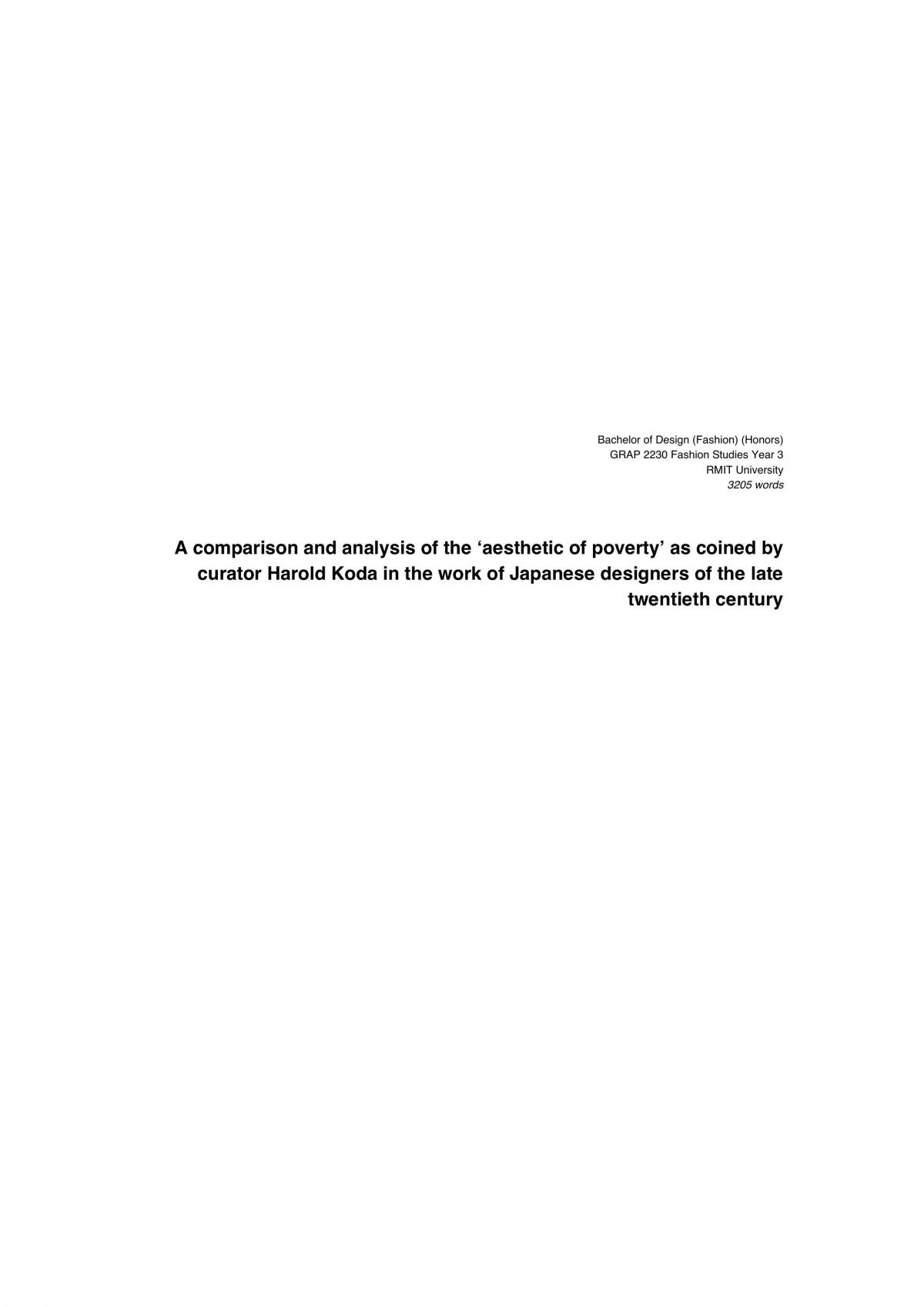Find
Search for over 200,000 study notes and past assignments!
Swap
Download study resources by swapping your own or buying Exchange Credits.
Study
Study from your library anywhere, anytime.
The ‘aesthetic of poverty’ in the work of Japanese designers of the late twentieth century
GRAP2230 - Fashion Studies 3
1 Found helpful • 8 Pages • Essays / Projects • Year: Pre-2021
A comparison and analysis of Japanese designers of the late twentieth century and how their influence has helped redraw the boundaries of fashion away from the restrictive Western ideals. The radical references and ideas of ragged, tattered, poor, ill-fitting, second-hand inspired clothes in Yamamoto and Kawakubo’s works largely shown throughout their earliest collections, have revolutionised the fashion world and challenged the cliché depiction of luxury fashion through the ‘aesthetic of poverty’ as coined by curator Harold Koda. Although not the first to discover and develop this aesthetic throughout history, Yamamoto and Kawakubo being inspired by the past, in particular the punk era established by Westwood and McLaren and arguably the years of impoverishment that faced Japan after World War II. Either way Yamamoto and Kawakubo have undoubtedly set the stage for post modernist interpretation of not only the confronting aesthetic of poverty but also of fashion in general.
This document is FREE
More about this document:
|
|
This document has been hand checkedEvery document on Thinkswap has been carefully hand checked to make sure it's correctly described and categorised. No more browsing through piles of irrelevant study resources. |
|
|
This is an Essay / ProjectEssays / Projects are typically greater than 5 pages in length and are assessments that have been previously submitted by a student for academic grading. |
|
|
What are Exchange Credits?Exchange Credits represent the worth of each document on Thinkswap. In exchange for uploading documents you will receive Exchange Credits. These credits can then be used to download other documents for free. |
|
|
Satisfaction GuaranteeWe want you to be satisfied with your learning, that’s why all documents on Thinkswap are covered by our Satisfaction Guarantee. If a document is not of an acceptable quality or the document was incorrectly described or categorised, we will provide a full refund of Exchange Credits so that you can get another document. For more information please read Thinkswap's Satisfaction Guarantee. |

Studying with Academic Integrity
Studying from past student work is an amazing way to learn and research, however you must always act with academic integrity.
This document is the prior work of another student. Thinkswap has partnered with Turnitin to ensure students cannot copy directly from our resources. Understand how to responsibly use this work by visiting ‘Using Thinkswap resources correctly’.
Browse RMIT Subjects


